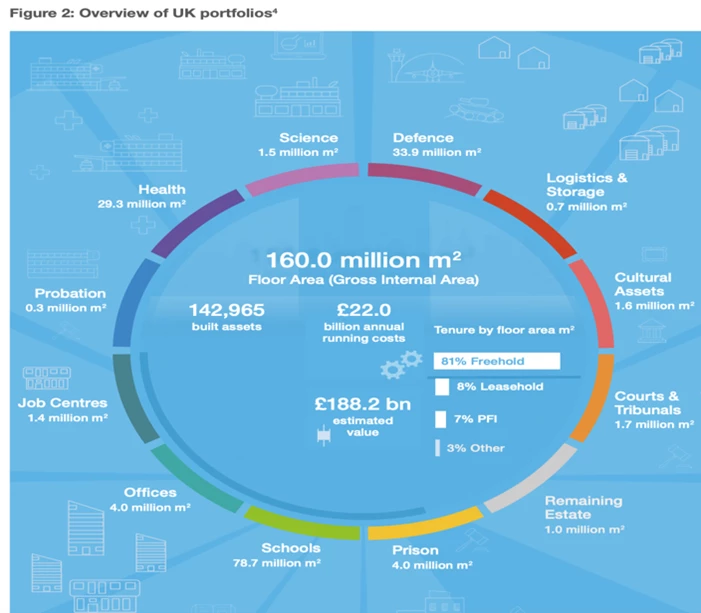 House and Market Asset Protection Canva Image
House and Market Asset Protection Canva Image
In 1086 William the Conqueror commissioned “The Domesday Book”—an archaic spelling of ‘domesday’. Despite its foreboding name, the document was, in fact, a comprehensive record of property, landowners, serfs and tenants, compiled mainly for tax purposes and to consolidate the political and economic power of the king.
Nearly a millennium after the text, which is also England’s oldest public record, came into existence, the United Kingdom has emerged as a frontrunner in creating a modern-day digital public asset register whose main purpose is to provide better public services.
The experience holds important lessons for countries seeking to accelerate their green and digital transitions. Innovations in big data and technology have made it much easier to systematically list and manage public assets. And yet, many public administrations are still struggling to consign the paper era to history.
The value of these public assets is substantial. According to the IMF, in a sample of 31 countries covering 61% of the global economy, physical public assets were worth around 219% of their combined economic output. But a review of 52 mostly developing countries that have completed and disclosed Public Expenditure and Financial Accountability Reports (PEFA) shows that most do not know, or track, their stock of physical assets. While governments and markets pay attention to what public sectors owe financially, what they own tends to be treated as an afterthought.
The UK offers one of the most proactive and progressive case studies of managing public assets. Its experience, though undeniably motivated by austerity, is instructive for other countries seeking to boost revenue and meet green and sustainability objectives. According to the UK Government’s Property Strategy 2022–2030, cost savings since 2010 have amounted to £1.6 billion per year, and the utilization of government offices has improved. In addition, the administration reduced the number of central government offices from 63 in 2018 to 36 currently, and disposed of assets worth £5.2bn during 2015- 2020. Better management of the public estate—valued at £496 billion—is credited with significantly reducing emissions.
At the heart of early efficiency gains was the Electronic Property Information Mapping Service (e-PIMS). The platform gives policymakers a view of a vast and complex property portfolio, which includes buildings, prisons, transport infrastructure and military bases. The next step was the Digital National Asset Register (d-NAR), a cloud-based cross-public sector property information tool with real-time dashboards and integrated geospatial functionality. Its successor is the InSite Asset Register. The UK’s 2030 strategy centres on further optimizing its public property portfolio, delivering high-quality workplaces, and supporting wider government objectives such as the levelling-up agenda, the digital transformation of public services and achieving net zero by 2050.
The UK has one of the most long-standing national frameworks to tackle climate change. This has proved instrumental in ensuring greater transparency and accountability in the governance of over 142,000 built assets. The framework includes the 2008 Climate Change Act, a law committing the government to reaching net-zero greenhouse gas emissions by 2050. In annual reports called “The State of the Estate”, the government summarizes progress on improving the efficiency and sustainability of public assets in accordance with the act.
Source: State of the Estate 2021-22
(Table omits overseas and infrastructure portfolios)
For instance, the report for the fiscal year 2021/22 shows that the government used two thirds less paper compared with 2017/18, and water consumption fell by 10%. Crucially, greenhouse gas emissions of the estate—with a floor area one-and-a-half times the size of the city of Paris—dropped 35%.
While The Domesday Book of old was an unalterable snapshot of taxes owed, modern-day asset registers are best seen as a dynamic record of assets held in trust by the government for common benefit in the form of public services ranging from schools and hospitals to courts and public transport networks. In this vein, the UK aims to establish metrics to measure customer satisfaction for each public property portfolio by 2025, placing the ultimate owner, the people, at the core of public asset management.
Editor's Note: This blog is part of a series on public asset management and how governments can enhance infrastructure services and unlock revenues through better management of the non-financial assets side of their balance sheet (real estate, land, and intangible assets such as digital information), see Bringing Public Assets Out of the Shadows: Optimizing Infrastructure Services, Unlocking Revenues.





Join the Conversation